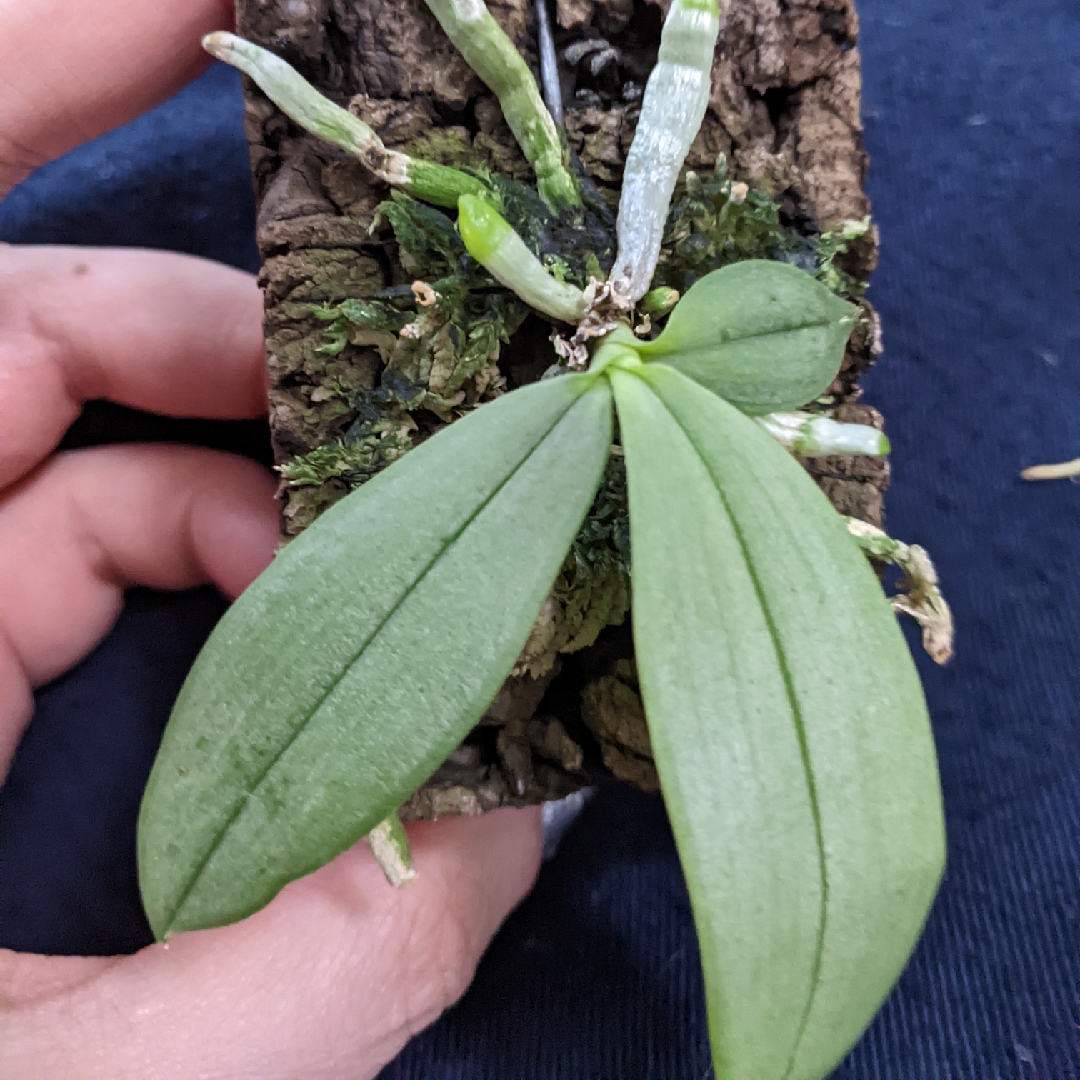
Phalaenopsis parishii
Parish's Phalaenopsis
Original:This species is similar to Phal. lobii, but has slightly smaller foliage and flowers with a purple-ish lip. They have densly flowered inflorescence with small floral bracts and carrying 5 to 6, lily of the valley scented flowers which open simultaneously in the spring. New:The Moth Orchid is one of the most common orchid plants. The species has many different varieties and the flower can come in any shape, size and colour depending the variety. They sport striking moth-like flowers which give the plants the common name of Moth Orchids. They grow well in centrally heated rooms and have long-lasting flowers produced all year round.
-
Partial shade
-
Occasional watering
-
Not Frost hardy
-
Moist and free draining
Common name
Parish's Phalaenopsis
Latin name
Phalaenopsis parishii
type
Orchid
family
Orchidaceae
ph
5.0 - 8.0 Acid - Neutral
Plant & bloom calendar
-
Best time to plant
-
When the plant will bloom
full grown dimensions
 0.50 M
0.50 M
0.50 M
0.50 M
Phalaenopsis parishii
Original:This species is similar to Phal. lobii, but has slightly smaller foliage and flowers with a purple-ish lip. They have densly flowered inflorescence with small floral bracts and carrying 5 to 6, lily of the valley scented flowers which open simultaneously in the spring. New:The Moth Orchid is one of the most common orchid plants. The species has many different varieties and the flower can come in any shape, size and colour depending the variety. They sport striking moth-like flowers which give the plants the common name of Moth Orchids. They grow well in centrally heated rooms and have long-lasting flowers produced all year round.
Flowering
From Early Spring TO Late Winter
Phalaenopsis produces flowers that last about three months (sometimes even longer) at any time of the year. Once the flowers have faded, cut the flowering stalk back to just above the second node (joint) visible beneath the spent flowers. A new flowering side shoot may develop.
Planting young plants
From Early Spring TO Late Winter
Sometimes small plantlets (keiki) appear from the nodes on the flower stems. Detach the plantlets when they have developed several good roots and pot them up in orchid compost. Water them sparingly at first, but mist them daily. Always use a proprietary orchid compost. Ensure good light levels in winter, as these are essential to encourage flowering. An east- or west-facing window would be ideal. Move to a shadier spot in summer and protect from direct sunshine.
Flowering
From Early Spring TO Late Winter
Many orchids do not have a flowering season and flowers may be produced at any time if the right conditions are being met. Terrestrial orchids grown outdoors will mostly flower in the summer months. Flowers can last for several months.
Planting young plants
From Early Autumn TO Late Autumn
Sometimes small plantlets (keiki) appear from the nodes on the flower stems. Detach the plantlets when they have developed several good roots and pot them up in orchid compost. Water them sparingly at first, but mist them daily. Always use a proprietary orchid compost. Ensure good light levels in winter, as these are essential to encourage flowering. An east- or west-facing window would be ideal. Move to a shadier spot in summer and protect from direct sunshine. When planting terrestrial orchids outdoors, plant in semi-shade, no direct sun at midday. A very suitable place would also be on the north side of a building. Most orchids are woodland plants and therefore prefer cool sites, which do not become too dry and hot during summer. Places where ferns thrive are also suitable for. Don’t plant your orchids close to trees or big shrubs because their roots are effective competition for water and nutrients! Autumn is the best season for planting. Spread out the roots in the upper 10 cm (4 inches) of the soil, the rhizome 2-3 cm (1 inch) below the surface, shoot buds upwards. Fill in the remaining substrate without compressing it, and water thoroughly.









